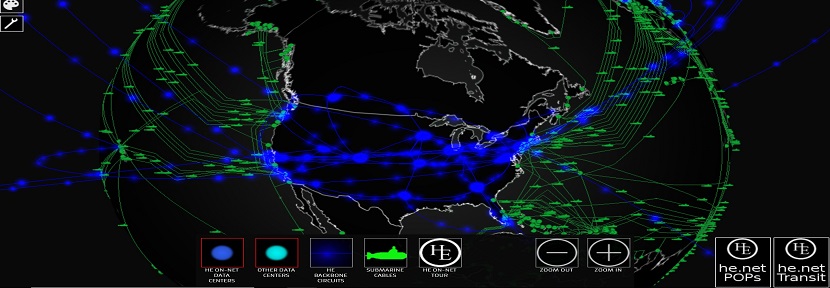New resource will be essential for financial services firms and multinational corporations, enabling users to instantly determine latency between any two cities
“The Layer 2 Latency Tool is unique among network providers and offers an innovative opportunity to research transit speeds and assist in global business planning,” said Mike Leber, President of Hurricane Electric. “Low-latency connectivity has become a critical need across all major industries, as minimizing delays in transactions and increasing data speed are vital to business success. By simply selecting the locations of Hurricane Electric PoP’s, users can get an instant read on latency and price quote within one business day.”
Additionally, in conjunction with the launch of the Layer 2 Latency Tool, Hurricane Electric has released a 3D Map of the global Internet. The map gives viewers an expansive look into the Internet’s infrastructure and the undersea cables that allow today’s Internet to thrive. The resource can be utilized by organizations strategizing for international expansion as well as others looking for insight into where Internet connections are made.
Hurricane Electric administers 155 global Points of Presence, encompassing twenty-nine US states, seven Canadian provinces, twenty-seven European countries, ten Asian nations, three African countries, and two South American nations. Having first deployed IPv6 in 2001, Hurricane Electric offers IPv6 as a core service and provides customers with both IPv4 and IPv6 connectivity options.
About Hurricane Electric
Fremont, California-based Hurricane Electric operates its own global IPv4 and IPv6 network and is considered the largest IPv6 backbone in the world as measured by number of networks connected. Within its global network, Hurricane Electric is connected to 185 major exchange points and exchanges traffic directly with more than 7,200 different networks.
Employing a resilient fiber-optic topology, Hurricane Electric has no less than five redundant 100G paths crossing North America, four separate 100G paths between the U.S. and Europe, and 100G rings in Europe and Asia. Hurricane also has a ring around Africa, and a PoP in Australia.
In addition to its vast global network, Hurricane Electric owns and operates two data centers in Fremont, California, including Fremont 2, its newest 208,000 square foot facility. Hurricane Electric offers IPv4 and IPv6 transit solutions over the same connection at speeds including 10 Gbps and 100 Gbps Ethernet.
For more information on Hurricane Electric, please visit http://he.net.
The full release can be found on Business Wire.



